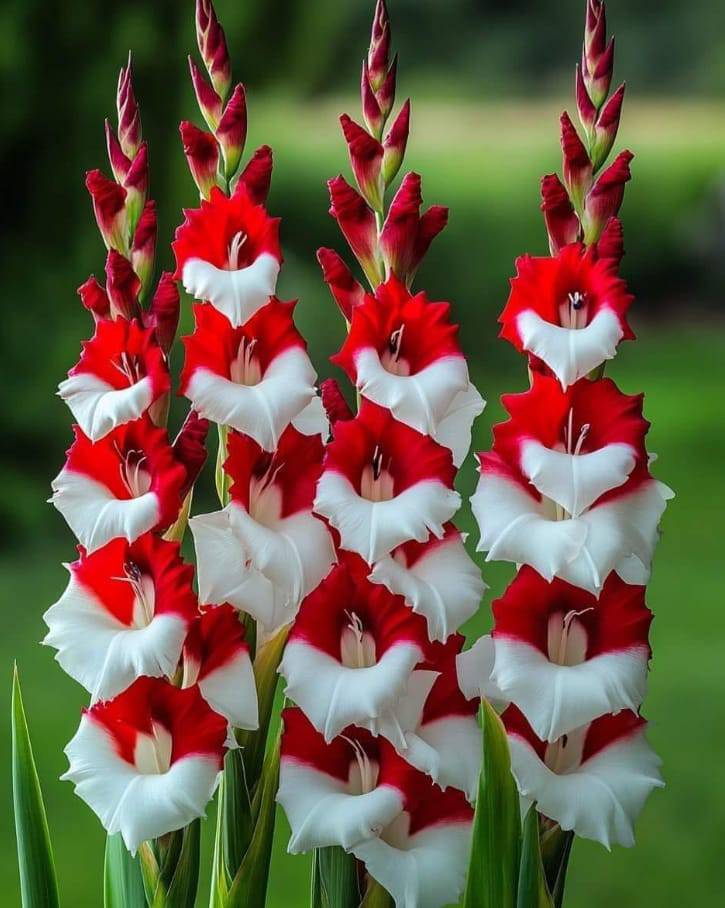ADVERTISEMENT
- Planting Gladiolus Bulbs
Gladiolus is grown from bulbs, which should be planted in the spring after the danger of frost has passed. To plant, dig holes that are about 4-6 inches deep. Place the bulbs in the hole with the pointed end facing upward. Space the bulbs about 4-6 inches apart, as gladiolus plants need plenty of space to grow tall and produce their large blooms.
If you’re planting multiple gladiolus bulbs, plant them in succession every few weeks to extend the flowering season. This is called “stagger planting” and ensures that you’ll have a steady display of gladiolus blooms throughout the summer.
- Fertilizing Gladiolus
To encourage strong, healthy growth and beautiful flowers, gladiolus plants benefit from regular fertilization. Use a balanced, slow-release fertilizer to provide nutrients during the growing season. You can also use a high-potassium fertilizer during the blooming period to enhance flower color and promote more vibrant blooms.
Apply fertilizer at planting time and again every 4-6 weeks during the growing season. Avoid over-fertilizing, as this can lead to excessive foliage growth at the expense of flowers.
- Pruning and Deadheading
Gladiolus plants don’t require much pruning, but deadheading (removing spent flowers) is essential to encourage continuous blooming. Once the flowers on a spike begin to fade, cut the flower stalk down to the base to allow the plant to redirect its energy into new blooms.
If you notice any damaged or yellowing leaves, remove them to keep the plant looking tidy. Be careful not to cut back the foliage too early, as the leaves help the plant store energy for next year’s blooms.
- Supporting Gladiolus Stems
Due to their tall growth, gladiolus spikes often require support, especially if grown in windy areas. Installing stakes or using plant supports can help keep the plants upright and prevent them from toppling over when in full bloom. Stake the plants early, as this will help prevent the stems from being damaged as they grow.
Use soft twine or plant ties to gently secure the stems to the stakes. Avoid using anything too tight, as it could restrict the growth of the plant.
- Pest and Disease Control
Gladiolus are relatively pest-resistant but can sometimes attract aphids, thrips, and spider mites. Regularly inspect the leaves for signs of pest activity, such as yellowing or curled leaves. If pests are present, treat the plants with insecticidal soap or neem oil.
Additionally, gladiolus is susceptible to fungal diseases like rust and botrytis blight, especially if grown in overly damp conditions. Ensure proper spacing between plants for adequate airflow and avoid overhead watering to reduce the risk of fungal infection.
- Harvesting Gladiolus
One of the greatest joys of growing gladiolus is cutting the flowers for indoor arrangements. To harvest gladiolus for bouquets, cut the stems when the first few flowers on the spike are fully open. This ensures the blooms will continue to open after being cut.
Cut the stems at an angle using sharp scissors or pruning shears. Place the flowers in a vase with water immediately after cutting to preserve their freshness.
Conclusion
The Red and White Gladiolus is an outstanding choice for adding height, drama, and elegance to your garden. Its tall, sturdy stems and bold, vibrant blossoms make it a perfect plant for borders, garden beds, and cutting gardens. By following these care guidelines, including providing full sun, well-drained soil, consistent watering, and proper fertilization, your gladiolus will reward you with a breathtaking display of flowers that will shine in the summer months. 🌺
ADVERTISEMENT
